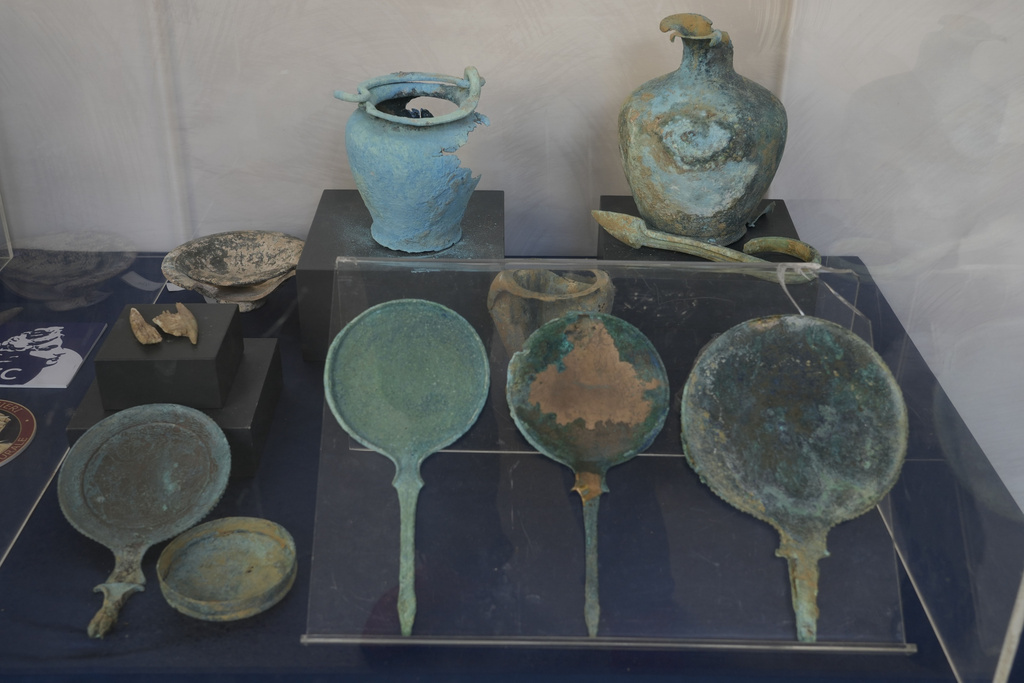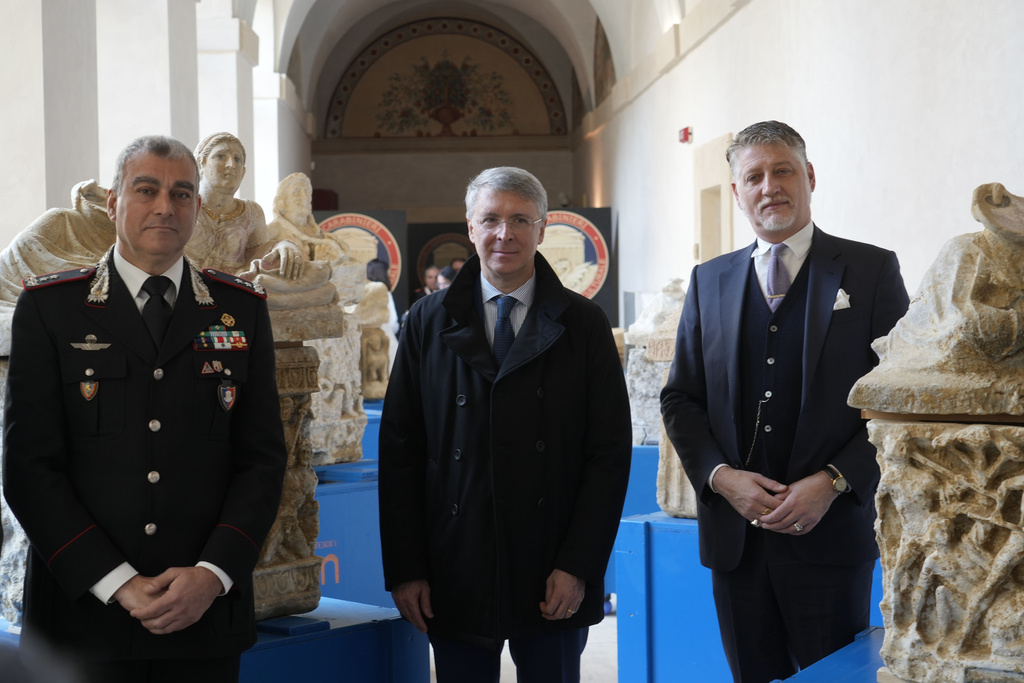Etruscan Artifacts Worth €8M Seized in Italy’s Umbria Region \ Newslooks \ Washington DC \ Mary Sidiqi \ Evening Edition \ Italian authorities have seized €8 million worth of artifacts from an illegal excavation of an Etruscan burial site in Umbria. The operation uncovered sarcophagi, urns, and relics linked to the ancient Etruscan civilization, dating from 900 B.C. to 27 B.C. Using drones and phone taps, investigators located the site, which was connected to a 2015 find by a local farmer.

Etruscan Burial Site Discovery: Quick Looks
- Seized Artifacts: Authorities recovered €8 million worth of urns, sarcophagi, and burial relics.
- Illegal Operation: Excavation linked to black market artifact trafficking in central Italy.
- Discovery Origins: Found near a 2015 site initially uncovered by a farmer in Umbria.
- Key Tools: Drones, aerial photography, and phone taps helped identify the hidden site.
- Notable Finds: Included sarcophagi of Etruscan princesses, burial trousseau, and rare urns.
- Civilization Timeline: Etruscans flourished from 900 B.C. to 27 B.C. in central Italy.
- Trafficking Investigation: Two suspects under inquiry for involvement in illegal artifact trade.
Deep Look
Background of the Discovery
The illegal excavation took place near a site uncovered in 2015 when a local farmer stumbled upon ancient relics while tilling his land. Authorities began investigating the new site after images of artifacts resembling the 2015 find began circulating on the black market. The photographs hinted at a previously unknown burial site, prompting authorities to launch a detailed investigation.
How Authorities Found the Site
Artifacts Recovered
The findings at the site were both stunning and invaluable. Authorities recovered two sarcophagi believed to belong to Etruscan princesses, with one still containing a skeleton. Alongside these, a burial trousseau was uncovered, which included urns adorned with intricate battle and hunting scenes, perfume jars, and a bone comb. These relics offer a rare glimpse into the funerary practices, artistic craftsmanship, and daily life of the Etruscan people.
Etruscan Civilization: A Historical Treasure
Black Market and Legal Ramifications
The illegal excavation and attempted sale of these artifacts highlight the persistent threat of black market trafficking, which not only robs nations of their cultural heritage but also disrupts historical narratives by removing objects from their contexts. Two individuals are currently under investigation for their involvement in the operation. These suspects allegedly planned to sell the artifacts to private collectors, depriving researchers and the public of access to this vital historical record.
Modern Investigative Techniques
The Importance of Preservation
The seizure of these artifacts is a critical victory for cultural preservation efforts in Italy. By recovering these relics, authorities have safeguarded a priceless part of Italy’s historical legacy, ensuring these treasures remain accessible to researchers, historians, and the public. This case also highlights the need for ongoing vigilance and collaboration between archaeologists, law enforcement, and policymakers to protect sites vulnerable to exploitation.
Conclusion
As these artifacts undergo further study, they promise to shed new light on an ancient society whose influence continues to echo through history. This case underscores the enduring value of archaeological heritage and the importance of safeguarding it for future generations.







